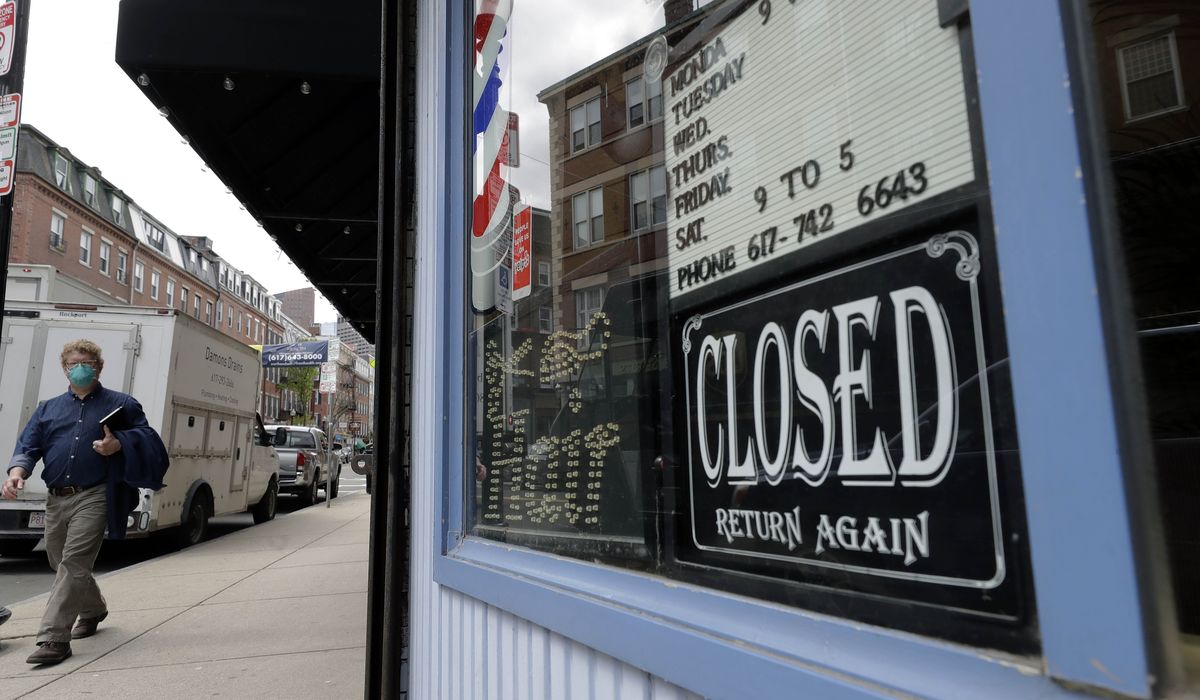
Laramy O’Leary’s gun shop, L&L Outdoors, has benefited from a pandemic spike in firearms sales but at the same time has suffered from reduced inventory and fewer customers, putting the business in a pinch in the new year.
His gun shop in Oklahoma is one of many small businesses, including restaurants, auto shops and health care clinics, that analysts say will struggle this year in an economy wracked by inflation, supply chain problems and excess consumer demand.
“We got a lot of new customers because there was some panic-buying going on for a while. But that’s leveled off now, and with inventory down, it looks like it’s going to be a real fight to get inventory this year,” said Mr. O’Leary, whose gun shop is in Jay, about 80 miles east of Tulsa near the Arkansas line.
His shop sold 10,000 guns last year, up from 7,500 in 2020, because riots and protests inspired more Oklahomans to buy guns for protection, he said.
“The struggle has been filling the gun range that helps offset the cost of the building and pay salaries. With the cost of ammunition so high, nobody wants to come,” Mr. O’Leary said. “I believe we’ll be able to stay open this year if we get more inventory.”
The percentage of business owners expecting better economic conditions in the next six months decreased 1 point to a net negative 38% in November, tying a 48-year record low in optimism, according to the National Federation of Independent Business’ Small Business Optimism Index.
The survey represented an 18-point decline over the previous four months and the lowest level since November 2012.
Bill Dunkelberg, the NFIB’s chief economist, said the pessimism stems partly from lawmakers proposing additional COVID-19 mandates and tax increases.
“Owners are also pessimistic as many continue managing challenges like rampant inflation and supply chain disruptions that are impacting their businesses right now,” Mr. Dunkelberg said.
Meanwhile, the net percentage of owners increasing selling prices rose 6 points to a seasonally adjusted 59%, the highest level in the monthly index since October 1979.
About 54% said they planned additional price hikes, an increase of 3 points from October and a 48-year record high for the NFIB survey.
Highlighting another struggle for small businesses, 48% of owners said they could not fill job openings.
The economic pressures are impacting small businesses in the service and manufacturing industries.
Sachin Shivaram, CEO of the Wisconsin Aluminum Foundry, which makes custom aluminum castings, said his challenge this year will be to maintain normal operations at the 112-year-old company.
“The playbook that has served us for the past century is suddenly irrelevant,” Mr. Shivaram said. “For instance, we had always relied on the fact that people want to work at our company. Now, with remote work and flexible schedules in other industries, our jobs are not at the top of the list.”
The company’s four manufacturing plants in Wisconsin and one in Indiana employ about 500 people to make castings for medical equipment, trucks, automotive parts, oil, gas and cookware.
Wisconsin Aluminum has entered the new year struggling with a shortage of skilled labor, a scarcity of raw materials and unpredictable supply chains. Demand has decreased from customers dealing with microchip shortages, cyberattacks, retirements of long-term employees, an inability to find maintenance contractors, years of construction delays, unreliable travel schedules, struggles from its three employee unions and a rise in COVID-19 cases.
“As a result of everything, our on-time delivery is the worst it has ever been,” Mr. Shivaram said. “Customers are beyond upset.”
Some small businesses have shut down or cut back their hours because of the fast-spreading omicron variant of the coronavirus. Businesses that rely on in-person crowds have suffered the most, said Ben Johnston, the chief operations officer at the small business financing firm Kapitus.
He said restaurants, movie theaters, retailers and gyms have been looking for loans to keep their doors open. Contractors, auto shops, manufacturers, trucking companies and health care providers have had the opposite problem: keeping up with demand.
Mr. Johnston saw that as a sign of hope.
“We see inflation stabilizing and then declining while supply chain issues slowly unwind,” he said. “However, a tight labor market and high raw material costs will continue to cause many businesses stress as they work to expand operations to meet the opportunity created by growing consumer demand.”








